Dr. Mark Banas thinks so. Take a look at his video account of Religious Philosophy as Multidisciplinary Comparative Inquiry: Envisioning a Future for the Philosophy of Religion. Mark has produced a bunch of good videos and I encourage you to subscribe to keep track of his adventures in communicating religion, and sometimes philosophy, through “Ten on Religion.” See his channel here.
Author Archives: Wesley Wildman
Intellectual Autobiography
The Institute for American Religious and Philosophical Thought just wrapped up its 2021 meeting. They asked me to present my intellectual autobiography, which I was honored to do. It was strange to be forced to slow down and think about my intellectual history. And it was daunting to be listened to by colleagues on such a topic.
I might have spent more time on ideas but I didn’t for two reasons. On the one hand, later in 2021, a book of essays about my ideas is supposed to appear, and my response essay in that volume covers that territory. On the other hand, the intellectual autobiography was a pandemic-affected Zoom affair, scheduled after a long day of lectures, so I wanted to keep it light. I focused on life stories.
Since there is no way to publish such a thing, I’m posting it here as an illustrated pdf.
20210605-Intellectual-Autobiography-for-IARPTThe Winding Way Home is almost here!
After a lifetime of writing non-fiction, my first novel will be published by Wildhouse Fiction – in Fall 2023. At present, I’m collecting reviews from advance readers so let me know if you’d like to help out with a review and I’ll send you an advance copy.
It wasn’t easy to make the transition to the bewitching world of storytelling, let me tell you. But there is something incredibly satisfying about writing a moving story.
Called The Winding Way Home, here’s a precis.
When disaster strikes Jesse and Alexandra’s family, their lives shatter. Jesse’s grief triggers a full-blown psychiatric crisis, which spurs a most unusual spiritual quest in an attempt to find a way to feel at home in what suddenly seems like a cruel world. In the midst of her own trauma, Alexandra is diagnosed with Alzheimer’s disease, further pitching the family into desperation. Jesse’s weekly breakfast with two of his children, along with Alexandra’s determined efforts to fight the erasure of her memories, holds the family together despite the agonizing uncertainty surrounding all of them. Jesse and Alexandra find themselves drawn into the horrifying world of missing and abducted children and the minds of their captors, and eventually adopt an abduction survivor named Maddy and her young children. Together, they forge a new and expanded family, and create a home where everyone can heal. This is a family saga, a love story, an account of child abduction and its exacting aftermath, a tale of hard-won hope, and a profound exploration of the spiritual potential of ordinary life in the face of the unthinkable.
Here are comments from advance readers (see the website for more).
As a one-time English professor, having absorbed countless works of fiction, I have never read a novel more devastating nor more beautiful.
— Patricia Browne, Former Professor of English, St. Catherine’s University, St. Paul, Minnesota
Disturbing, inspiring, daring, heartwarming, this is a novel of family, of terrible events, of deep and patient love (the erotic is not neglected), and of ultimate experiences and mysteries. The prose is engaging, the storytelling deft and resourceful, the vision of life opening into a larger vision of Being Itself.
— Brian Jorgensen, Professor Emeritus, Department of English, Boston University
The Winding Way Home is a story about constructing meaning after unspeakable evil renders reality absurd, about the power of love to transfigure traumas that are beyond the reach of healing, and, ultimately, about the immense beauty, unspeakable wonder, and infinite spiritual vitality of everyday life. Providing a searing vision of the depth dimension of human life shorn of all supernatural obfuscations, it’s a must read, especially for the spiritual but not religious crowd.
— David Rohr, Center for Mind and Culture, Boston
Spirit Tech: The Brave New World of Consciousness Hacking and Enlightenment Engineering
Spirit Tech is out!
Listen to an excerpt from the audiobook here.
Beauty in the Ordinary: A New Way to Do Lent
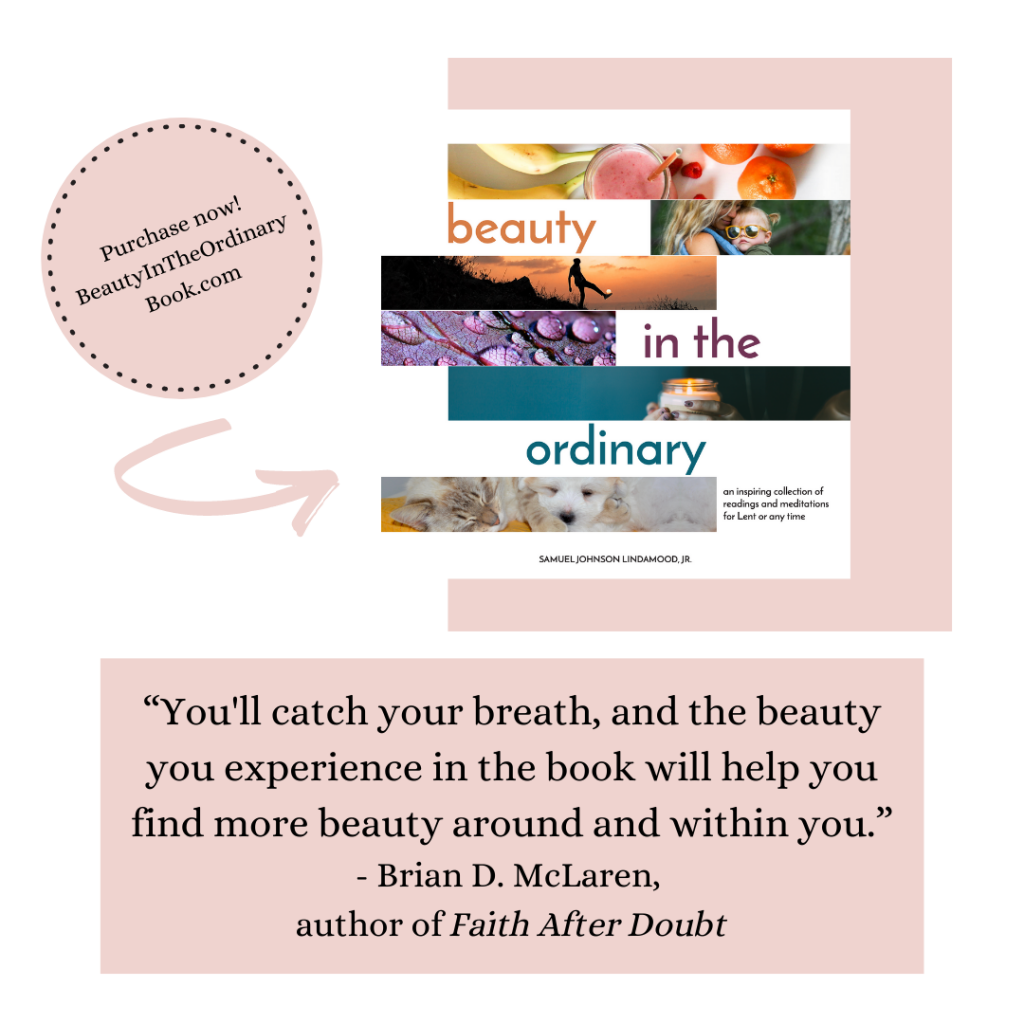
Back in the day, I was deeply affected by a dynamic preacher and gifted pastor, the late Rev. Samuel Johnson Lindamood, Jr., often affectionately referred to as “Big Sam.” His ministry in Arizona and California churches nurtured and transformed generations of people.
Big Sam wrote a series of meditations in the late 1980s for those who needed a less conventional, more practical approach to Lenten reflection. Here’s what he said about it: In a culture consumed with consuming, it seems that more is never enough. The eyes search for new and exciting sights, the appetite longs for more and varied tastes…Lent offers a time to overcome our consumerism, to give up something as a discipline—not a popular idea, but an important one. Lent offers a time also of taking something on, some new and different commitment, perhaps. And, finally, Lent offers a time of meditation and reflection. This book is for meditation and reflection during the forty days of Lent, once per day. Perhaps someone ‘taking it on’ will be better able ‘to give up something’ or deepen their commitment.
I originally edited and distributed an unillustrated version of these reflections to Big Sam’s many friends and followers. But I’ve always been convinced that this way of engaging the Lenten season had a much wider potential audience—especially for those who wanted to take Lent seriously, but found existing resources alienating or irrelevant.
Beauty in the Ordinary is a thoughtfully illustrated version of Big Sam’s meditations. It’s my attempt to honor “Big Sam” as the 25th anniversary of his death approaches. Daily meditations blended with Bible passages and impactful readings from some of his favorite books—from The Velveteen Rabbit to The Confessions of Saint Augustine—will inspire you to engage Lent in a different way this year. And you can use the book any other time, too.
Lent presents an opportunity to take stock of one’s life. It’s a time of reflection and restructuring. Beauty in the Ordinary holds tremendous value for the 2021 season of Lent… and well beyond. The book’s stunning photography makes it perfect to rest on your coffee table after you’ve finished reading it.
See more at BeautyInTheOrdinaryBook.com.
Praise for Beauty in the Ordinary
Beauty in the Ordinary is a gift you can give to others or yourself. If you invest even a few minutes to read a selection and savor the beauty of the photography, you will find your soul renewed, your eyes opened, and your heart enlarged. You’ll catch your breath, and the beauty you experience in the book will help you find more beauty around and within you. This book is a treasure: profound, delightful, insightful.
— Brian D. McLaren, author of Faith After Doubt
For many Lent is the most depressing season of the church year. It seems mostly to consist of litanies of penitence and the sacrifice of chocolate, coffee, cheese, or, some other innocent pleasure. In this wonderful collection of Lenten reflections, the late Rev. Samuel Johnson Lindamood calls the reader from such misery to the possibility of self-knowledge, compassion, love and hope. Lent is not here a dreary series of chest beatings and cries of mea culpa, but an opportunity to learn to love oneself, one’s God, and God’s world. Through citations of spiritual writers, secular saints, and Holy Scriptures Lindamood locates our struggle to be human in humanity’s common quest for wholeness. Sit with these reflections, your pen and your journal, and be reborn.
— John E. Phelan, Jr., Emeritus President and Dean, North Park Theological Seminary
Beauty in the Ordinary opens doors into the colorful, complicated textures of human life – its sorrows, hardships, joys, and challenges. Light shines through these open doors to illumine beauty and to invite readers into deep thinking and joyful musing.
— Rev. Dr. Mary Elizabeth Moore, Emeritus Professor and School of Theology Dean, Boston University
The reader of this creative and engaging collection will find a wealth of beauty, both visual and verbal, in its pages. It is the kind of material that entices and keeps the reader involved, on a daily basis—a great gift, particularly in our present moment.”
— Rev. Dr. Robert Allan Hill Dean, Marsh Chapel Professor, New Testament and Pastoral Theology, Boston University
Beauty in the Ordinary feels just like I remember Sam himself: loving, warm, beautiful, unconventional, thought-provoking, and steady as a rock.
— Gay Lane, Principal, Douglas C. Lane & Associates, New York, NY
I’ve never read anything quite like this book. Refreshingly contemporary yet rich in timeless wisdom, Beauty in the Ordinary addresses life’s most profound themes with Sam Lindamood’s characteristic wit, delightful sense of humor, childlike curiosity, and humility. Highly recommended for anyone seeking a fresh perspective on the spiritual life.
— Dr. Dave Rohr, Postdoctoral Fellow, Center for Mind and Culture, Boston, MA
Biological Mutualism
Charles Darwin’s theory of evolution by natural selection portrays nature as red in tooth and claw, with fierce competition between and within species determining that only the fittest survive and reproduce. Or does it? Although the preceding interpretation predominated late into the twentieth century, in recent decades biologists have begun to appreciate that cooperation is how many species remain competitive and that mutualism between species is as successful an evolutionary strategy as parasitism.
Unlike parasitism where an organism like a tick or tapeworm exploits another organism, mutualism refers to an interspecies relationship that benefits both species. For example, almost half of land plants depend upon fungi to supply their roots with water and minerals, the fungi in turn receiving sugars from the plant’s roots. Many bird species share mutualistic relations with large animals like water buffalo and crocodiles, making easy meals from ticks and other parasites that prey upon the larger animals. Fruiting plants and the animals who consume their fruit also relate mutualistically: the animals receive sugar-rich nutrition while the plants’ seeds are carried far and wide, increasing their chances of reproducing.
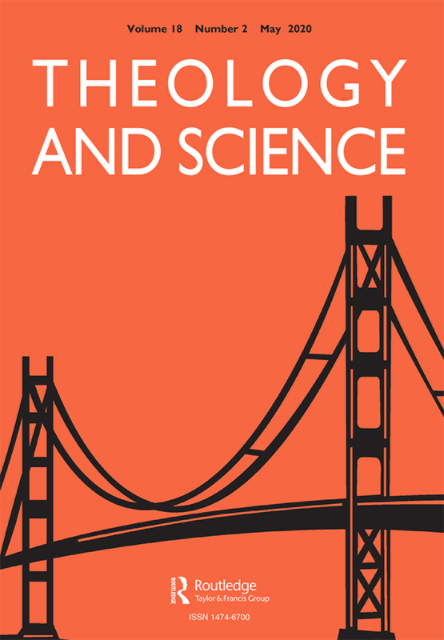
In a new article in Theology and Science Stephen Scaringe and Wesley Wildman argue that the recent recognition of widespread mutualism and symbiosis between biological species is a harbinger of a deeper realization with profound theological significance: “at a fundamental level, there are no separate life forms … living organisms only come into existence contingent or dependent on other species and organisms, and every living entity is perpetually dependent for its continued existence on other life forms, which in turn only exist contingently on other life forms.” Recognition of our inextricable interconnectedness with other organisms can be destabilizing, upsetting our clear-cut personal and collective identities. Destabilizing or not, Scaringe and Wildman predict that the continued growth of biological and ecological understanding will soon render this conclusion inescapable.
Anticipating the widespread acceptance of the conception of life as mutually constituted and contingently existent, Scaringe and Wildman reflect on the theological implications of this dawning awareness. In particular, they suggest that this conception of life demands a thorough rethinking of the idea of free will, problematizes conceptions of salvation that depend upon a clear distinction between persons and their bodies, and challenges conceptions of humanity as exercising divinely given dominion over the rest of nature. If Scaringe and Wildman are correct that the idea of life as mutually constituted is destined to prevail, we can hope that this idea will lead, not only to a more profoundly relational metaphysics, but also to a humbler, more caring way of relating to the organisms and ecosystems that sustain all human persons, societies, and civilizations.
Theology Without Walls: A Milestone in Transreligious Theology
For those of you are tracking the transreligious theology movement, a new milestone has been reached with the publication of Theology Without Walls: The Transreligious Imperative (New York: Routledge, 2019). Jerry Martin, the hero of this fledgling movement, edited the volume, incorporating inspirational essays from many of the movement’s leading lights.
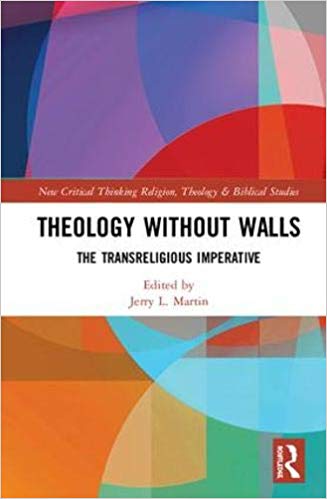
Here’s what the Routledge site has to say about the book:
“Thinking about ultimate reality is becoming increasingly transreligious. This transreligious turn follows inevitably from the discovery of divine truths in multiple traditions. Global communications bring the full range of religious ideas and practices to anyone with access to the internet. Moreover, the growth of the “nones” and those who describe themselves as “spiritual but not religious” creates a pressing need for theological thinking not bound by prescribed doctrines and fixed rituals. This book responds to this vital need.
“The chapters in this volume each examine the claim that if the aim of theology is to know and articulate all we can about the divine reality, and if revelations, enlightenments, and insights into that reality are not limited to a single tradition, then what is called for is a theology without confessional restrictions. In other words, a Theology Without Walls. To ground the project in examples, the volume provides emerging models of transreligious inquiry. It also includes sympathetic critics who raise valid concerns that such a theology must face.
“This is a book that will be of urgent interest to theologians, religious studies scholars, and philosophers of religion. It will be especially suitable for those interested in comparative theology, inter-religious and interfaith understanding, new trends in constructive theology, normative religious studies, and global philosophy of religion.”
The table of contents is in the book’s promotional flyer.
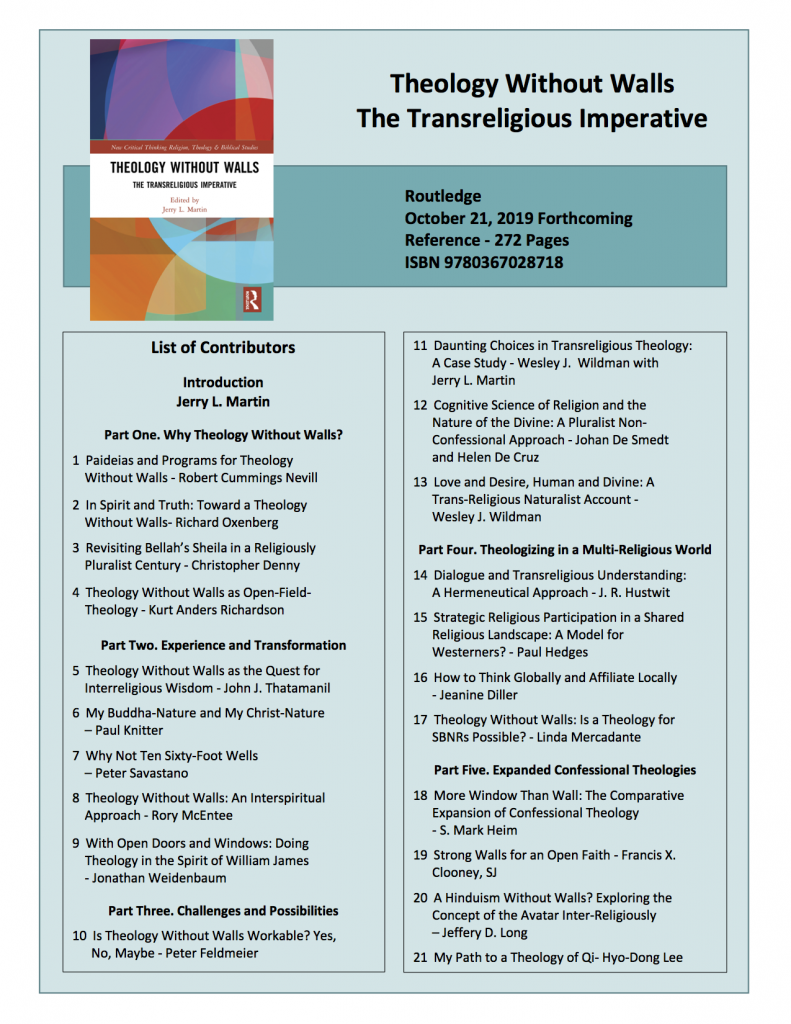
Human Simulation released by Springer
Some of you are aware that my research efforts in recent years have included trying to make computational modeling and simulation useful for the humanities disciplines, the arts, the interpretative social sciences – in other words, the less tangible parts of the university, which are my usual habitation. A few of us got together to build computer simulations with such intellectuals, which was a blast. We present both these people’s simulations and their experiences of building them in a book. The latter is especially fascinating because building a computer simulation related to their field of expertise was a novel experiences for these scholars. That book has just appeared, and it marks a key point in the emerging specialization of human simulation.
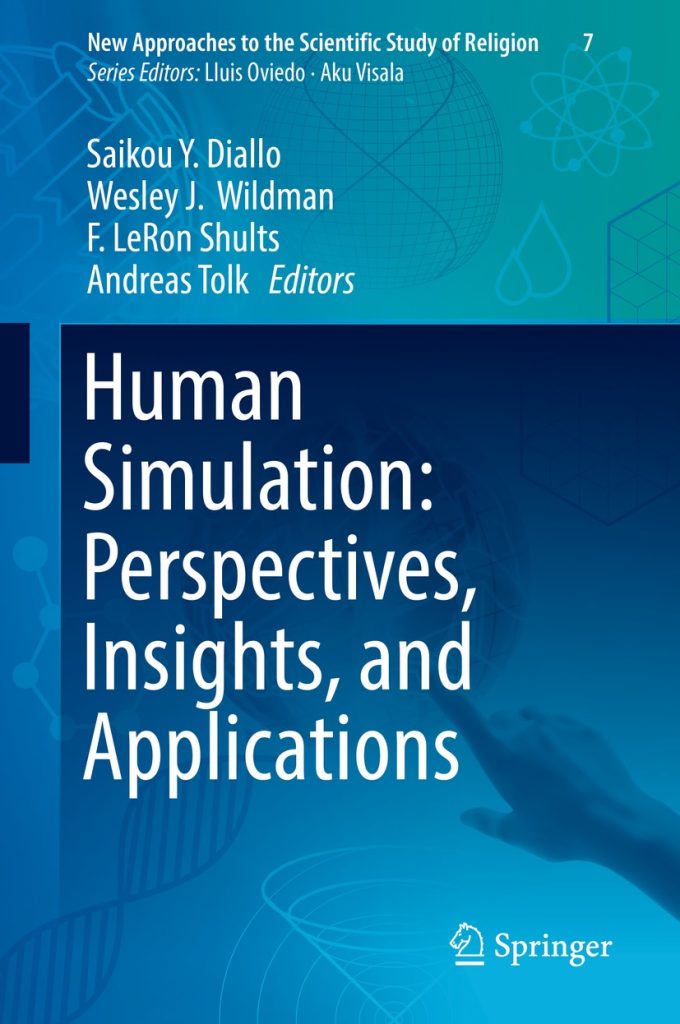
The website for the book describes the volume nicely:
This uniquely inspirational and practical book explores human simulation, which is the application of computational modeling and simulation to research subjects in the humanities disciplines. It delves into the fascinating process of collaboration among experts who usually don’t have much to do with one another – computer engineers and humanities scholars – from the perspective of the humanities scholars. It also explains the process of developing models and simulations in these interdisciplinary teams.
Each chapter takes the reader on a journey, presenting a specific theory about the human condition, a model of that theory, discussion of its implementation, analysis of its results, and an account of the collaborative experience. Contributing authors with different fields of expertise share how each model was validated, discuss relevant datasets, explain development strategies, and frankly discuss the ups and downs of the process of collaborative development. Readers are given access to the models and will also gain new perspectives from the authors’ findings, experiences, and recommendations.
Today we are in the early phases of an information revolution, combining access to vast computing resources, large amounts of human data through social media, and an unprecedented richness of methods and tools to capture, analyze, explore, and test hypotheses and theories of all kinds. Thus, this book’s insights will be valuable not only to students and scholars of humanities subjects, but also to the general reader and researchers from other disciplines who are intrigued by the expansion of the information revolution all the way into the humanities departments of modern universities.
God Is… Released by Wipf & Stock
For those of you tracking my writings and wondering what my mystical philosophical theology sounds like from the pulpit, here is a book of sermons to answer that question (available on Amazon, too). I include below the back-cover information to give you a sense of what the book contains. Many thanks to Rev. Dr. Stephen Chapin Garner and Rev. Dr. Robert Cummings Neville for their kind words about the book.
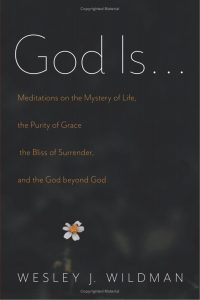
Your God is too small—way too small! What if God is not a human-like personal being but the God Beyond God of the Christian mystical traditions? What if God is the ultimate reality beyond all beings, including beyond all divine beings, indeed beyond all Being? It’s a mind-bending idea. Speaking of God as a human-like personal being is much easier but people who care about the deepest mystical understandings of God within our traditions need to make the effort to speak about the God Beyond God, despite the difficulties. This book makes the attempt to speak of the God Beyond God in the language of the sermon, using metaphor and potent imagery tuned to the existential intensities of human life. The God Beyond God is closer to us than our jugular veins, vividly present in every moment of our lives. These sermons are practical and moving, and they also resonate with the most rigorous theological understandings of ultimate reality. Their deconstruction of our convenient fantasies about a divine being make these sermons emotionally intense and perhaps not suitable for beginners in the journey of faith. But veteran believers can breathe deeply in the air of these meditations, relaxing into the bliss of engaging ultimate reality without delusions, without deflections, and without controlling the object of our worship.
“God Is… is a gift. Not all sermon collections read well, because sermons are an interactive event between a pastor, a people, Scripture, and the Lord. Dr. Wildman’s sermon volume is that rare exception where the written word maintains the power and eloquence of what was first preached. There is a wonderfully poetic quality to his theology and biblical interpretation that encourages both reading and re-reading these messages.” —Stephen Chaplin Garner, Senior Pastor of The Congregational Church of New Canaan, CT; author, Getting in Character: The Art of First-Person Narrative Preaching
“When I heard Wildman give the first sermon of this book, in 1993, I was so moved by its fierce courage to say what most people only fear is true about God that I wept. Its original title was ‘God the Destroyer.’ The second sermon, then called ‘God the Friend,’ was just as shaking: who would imagine friendship so weirdly deep? Wildman is a naturalist, which is explained in these sermons, though not in so many words. But he is also a biblical preacher and a rhetorical genius, a Christian preacher in the great tradition. His fervent piety inspires as it breaks common symbols and symbolizes what most Christians barely grasp. These sermons are dangerous and oh so loving.” —Robert Cummings Neville, Dean emeritus of Marsh Chapel; author, Nurture in Time and Eternity and Seasons of the Christian Life
Effing the Ineffable Released by SUNY
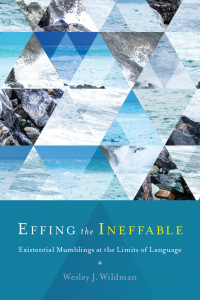 The State University of New York Press recently released Effing the Ineffable: Existential Mumblings at the Limits of Language. This is the sixth volume in my Religious Philosophy series, and the fifth of six to appear. The last to appear, God willin’ and the crick don’ rise, is volume 3 on Science and Ultimate Reality.
The State University of New York Press recently released Effing the Ineffable: Existential Mumblings at the Limits of Language. This is the sixth volume in my Religious Philosophy series, and the fifth of six to appear. The last to appear, God willin’ and the crick don’ rise, is volume 3 on Science and Ultimate Reality.
The SUNY web page for the book describes the book as “A meditation on how religious language tries to limn the liminal, conceive the inconceivable, speak the unspeakable, and say the unsayable.” That’s about right. it goes on:
In Effing the Ineffable, Wesley J. Wildman confronts the human obsession with ultimate reality and our desire to conceive and speak of this reality through religious language, despite the seeming impossibility of doing so. Each chapter is a meditative essay on an aspect of life that, for most people, is fraught with special spiritual significance: dreaming, suffering, creating, slipping, balancing, eclipsing, loneliness, intensity, and bliss. These moments can inspire religious questioning and commitment, and, in extreme situations, drive us in search of ways to express what matters most to us. Drawing upon American pragmatist, Anglo-American analytic, and Continental traditions of philosophical theology, Wildman shows how, through direct description, religious symbolism, and phenomenological experience, the language games of religion become a means to attempt, and, in some sense, to accomplish this task.
Back to work!


